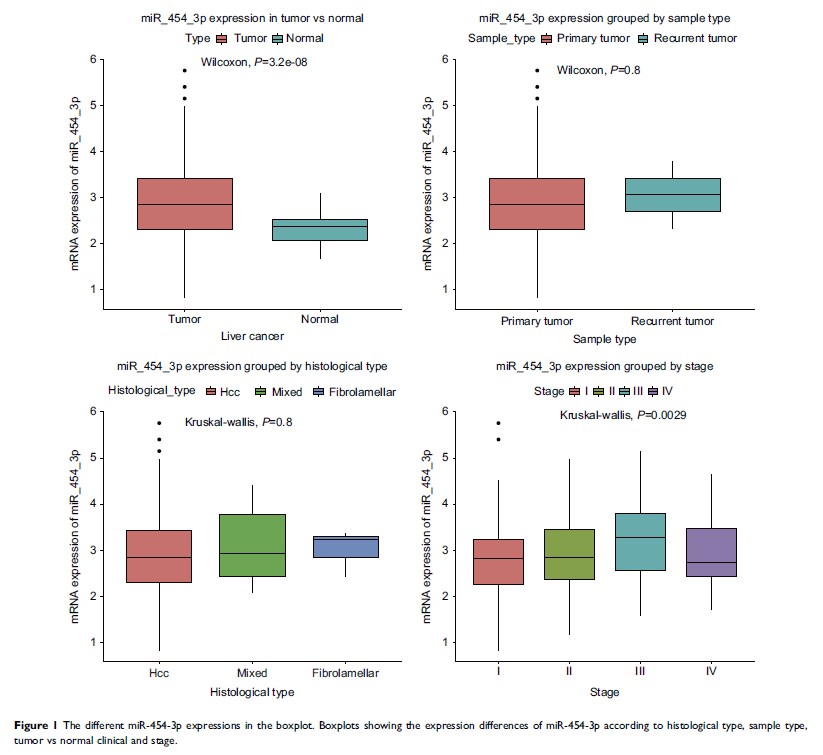9 0 8 1 0
论文已发表
注册即可获取德孚的最新动态
IF 收录期刊
- 2.6 Breast Cancer (Dove Med Press)
- 3.9 Clin Epidemiol
- 3.3 Cancer Manag Res
- 3.9 Infect Drug Resist
- 3.6 Clin Interv Aging
- 4.8 Drug Des Dev Ther
- 2.8 Int J Chronic Obstr
- 8.0 Int J Nanomed
- 2.3 Int J Women's Health
- 3.2 Neuropsych Dis Treat
- 4.0 OncoTargets Ther
- 2.2 Patient Prefer Adher
- 2.8 Ther Clin Risk Manag
- 2.7 J Pain Res
- 3.3 Diabet Metab Synd Ob
- 4.3 Psychol Res Behav Ma
- 3.4 Nat Sci Sleep
- 1.9 Pharmgenomics Pers Med
- 3.5 Risk Manag Healthc Policy
- 4.5 J Inflamm Res
- 2.3 Int J Gen Med
- 4.1 J Hepatocell Carcinoma
- 3.2 J Asthma Allergy
- 2.3 Clin Cosmet Investig Dermatol
- 3.3 J Multidiscip Healthc

miR-454-3p 高表达预测肝细胞癌预后不良
Authors Li Y, Jiao Y, Fu Z, Luo Z, Su J, Li Y
Received 1 December 2018
Accepted for publication 31 January 2019
Published 8 April 2019 Volume 2019:11 Pages 2795—2802
DOI https://doi.org/10.2147/CMAR.S196655
Checked for plagiarism Yes
Review by Single-blind
Peer reviewers approved by Dr Andrew Yee
Peer reviewer comments 2
Editor who approved publication: Dr Antonella D'Anneo
Purpose: Hepatocellular
carcinoma (HCC) is one of the most common malignant tumors in the clinic all
over the world, which has become a public health challenge. The T/N/M staging
system plays a core role in HCC prognosis. However, it cannot precisely
stratify the risk of HCC prognosis. MiR-454-3p plays an important role in the
progression of tumors. Therefore, we need to develop more reliable prognostic
markers for HCC patients which can focus on miR-454-3p.
Methods: We used
Chi-square and Fisher exact tests to assess correlations between miR-454-3p
expression and clinical parameters in liver cancer patients from The Cancer
Genome Atlas database (TCGA). Then, Cox regression analysis, Kaplan-Meier
curve, and log-rank test were used to compare the difference of survival
between the high-expression group and low-expression group, and P value was
included. Finally, we used TCGA data set to carry out gene enrichment analysis.
Results: In this
research, the expression of miR-454-3p increased in HCC and was associated with
patient survival, G3/G4 staging, III/IV staging and T staging. Higher
miR-454-3p expressed patients had shorter survival time. Besides, mitotic
spindle, G2M checkpoint, and E2F targets were differentially enriched in
miR-454-3p high-expression phenotype by Gene set enrichment analysis.
Conclusion: Overexpression
of miR-454-3p may be a significant and independent predictor of poor prognosis
in HCC patients.
Keywords: miR-454-3p,
hepatocellular carcinoma (HCC), prognosis, predictor
